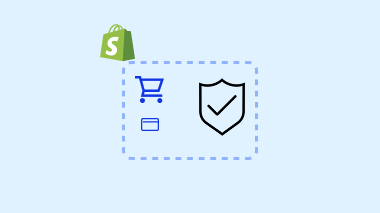Adding warranty options is one of the most effective ways to increase customer confidence and boost your average order value. But in Shopify, showing warranties neatly under the associated product in the cart (rather than separately) isn’t straightforward — especially if you want to keep your store fast and avoid adding third-party apps.
In this post, you’ll learn how to create a custom warranty integration using Shopify’s native features and Liquid + JavaScript, with minimal performance impact and full control over the cart experience.
What You’ll Achieve
- A clean cart UI where the warranty is visually grouped with its product
- Optional or required warranty for each product
- Warranty added as a linked product, not just a line item note
- Full support on both cart sidebar and cart page
- Sync warranty quantity with the product
- Fully customizable and optimized for Core Web Vitals
Why This Matters for UX & SEO
Google now considers page experience metrics like Largest Contentful Paint (LCP), layout shifts, and JS execution time in SEO ranking. By avoiding apps and using this approach:
- You reduce render-blocking scripts
- Avoid excessive DOM elements
- Minimize cart update latency
This improves performance, which boosts conversion rates and improves Google search visibility.
Step-by-Step Implementation
1. Create a Warranty Product
- Create a simple product or variant in Shopify Admin (e.g., “2-Year Warranty”)
- Set a fixed price (e.g., $29.99)
- Mark it as “Not visible on storefront” if needed
- Note down the variant ID
This will be used later to add it to the cart via AJAX.
2. Update Theme to Handle Warranties
You’ll need to update your cart JavaScript to:
- Filter and separate warranty items
- Display them below the main product
- Keep quantities in sync
a. Add Warranty to Cart with line item properties
const data = {
id: WARRANTY_VARIANT_ID,
quantity: 1,
properties: {
is_warranty: 'true',
linked_variant_id: MAIN_PRODUCT_VARIANT_ID,
main_product_title: "iPhone 14 Pro"
}
};
fetch('/cart/add.js', {
method: 'POST',
headers: { 'Content-Type': 'application/json' },
body: JSON.stringify(data)
});
b. Load Cart Data After Page Load
fetch('/cart.js')
.then(res => res.json())
.then(cart => {
const mainItems = [];
const warrantyItems = [];
cart.items.forEach(item => {
if (item.properties?.is_warranty === 'true') {
warrantyItems.push(item);
} else {
mainItems.push(item);
}
});
renderCartWithWarranties(mainItems, warrantyItems);
});
c. Display Warranties Below the Main Product
function renderCartWithWarranties(mainItems, warrantyItems) {
mainItems.forEach(mainItem => {
renderMainProduct(mainItem);
const relatedWarranty = warrantyItems.find(w =>
w.properties?.linked_variant_id == mainItem.variant_id
);
if (relatedWarranty) {
renderWarrantyItem(relatedWarranty, mainItem);
} else {
renderAddWarrantyOption(mainItem);
}
});
}
3. Keep Warranty Quantity Synced
If a user updates the quantity of a product, automatically update the warranty:
function updateWarrantyQty(warrantyKey, newQty) {
fetch('/cart/change.js', {
method: 'POST',
headers: { 'Content-Type': 'application/json' },
body: JSON.stringify({ id: warrantyKey, quantity: newQty })
});
}
Bonus: Exclude Warranty from General Cart Loop
If you use a loop like {% for item in cart.items %}, add a condition to skip warranties:
{% unless item.properties.is_warranty == 'true' %}
{% endunless %}
Then separately loop through warranties if needed.
Real Use Case
We implemented this on a Shopify Plus store that was struggling with low performance scores due to heavy app use. After replacing the warranty app with this native approach:
- Core Web Vitals improved by 40%
- LCP dropped by 2.5s
- PageSpeed score jumped from 40 to 85+
- Reduced cart abandonment due to cleaner UI
SEO & Performance Benefits
- No external app dependencies
- Fewer API calls
- Customizable UX without increasing DOM size
- Better CLS & LCP scores
- Fast cart updates = better conversion rate
Final Thoughts
Adding warranties without apps isn’t just about cleaner code — it’s about delivering a frictionless, fast, and professional shopping experience. This approach gives you full control over:
- Design & behavior
- Performance optimization
- Analytics & A/B testing
